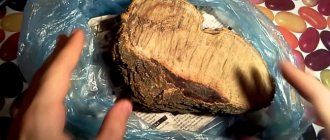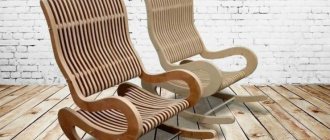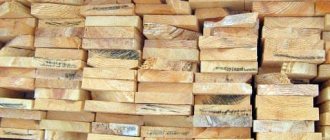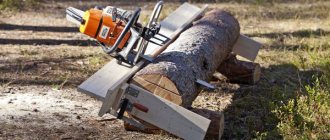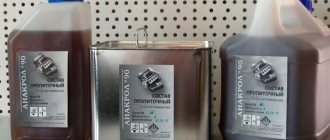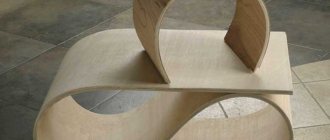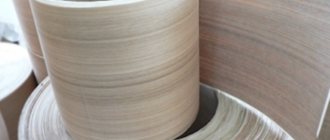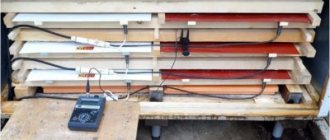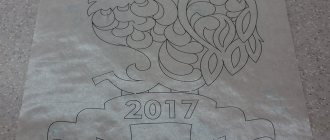Hello dear readers and subscribers of the blog, Andrey Noak is in touch with you again! Today we will talk to you about how to make wood antiseptic with your own hands. Working at the sawmill, we very often encountered this problem - phytosanitary workers arrived, found the longhorned beetle and banned the export of lumber. I had to periodically resort to the services of antiseptics, such as Senezh.
In addition to protecting against insects and bacteria, the antiseptic protects the wood from being susceptible to fire or, in other words, increases its fire resistance. Such solutions are very popular in the manufacture of saunas, baths and private houses.
Introduction
Why did I start talking about antiseptic and making it at home? The whole point is that you can buy an expensive antiseptic at a hardware store and dilute it to the desired consistency, as we did at the enterprise. But the company had a lot of money and could afford such luxury.
But you can’t always afford such a luxury at home, so it’s better to buy inexpensive chemicals and prepare the solution much cheaper at home.
Preparing the solution at home is very effective when used in large quantities, for example in the construction of a house or bathhouse or some other buildings on a personal plot. In addition, it is better to buy three liters of chemicals than to buy a whole jar of the same Senezh for a much larger volume.
Bitumen based paste
Do-it-yourself antiseptics for wood with deep penetration are made on the basis of bitumen. Additional components for the solution are gasoline or diesel fuel. The need for deep impregnation is often caused by aggressive environmental influences.
This recipe requires special care. The bitumen is placed in a metal container and heated until the lumps disappear. The thermal effect is stopped when the required degree of viscosity of the product is reached. Next, a solvent is added. Optimal penetration of the solution can be achieved by immersing the elements requiring treatment in the finished mixture. Bitumen antiseptic has a high degree of adhesion to the surface of wood.
Classification
According to their classification, several types can be divided:
- For internal use - the dry substance after application should not be harmful to health;
- For external use, the base of this solution must, in addition to microorganisms and bacteria, also resist ultraviolet rays;
- Water-based - the most common for interior work, as they are the most environmentally friendly and cheap;
- Oil-based ones are used as more durable and also environmentally friendly;
- On wax;
- On volatile organic substances or, more simply, on solvents.
Enemies of wood
Wood was, is, and certainly will be one of the most popular building materials, especially in such an industry as the construction and finishing of baths. True, under certain circumstances, the life of a wooden structure can be very short-lived. Wood has many enemies:
- Insects from the group of grinders. They damage solid wood, creating intricate lacework of round and elliptical passages in its thickness. They damage the integrity and strength of wood fibers by an order of magnitude, reducing the structural and consumer qualities of commercial wood;
- Microorganisms, primarily fungi from the mold genus. Colonies of microorganisms developing in favorable conditions are capable of subjecting a wooden structure to complete destruction in a fairly short period of time.
This raises the question. How to control pests and diseases of commercial timber. Only through preventive preventive and current restorative treatment with special antiseptic materials. They perform a number of useful functions:
- They create a layer impermeable to moisture and oxygen in the air, thereby creating anaerobic conditions in which the vital activity of the vast majority of pests and diseases is impossible.
- They have a general toxic effect on living organisms, suppressing their activity and destroying them.
Important! Considering the fact that antiseptics have a toxic effect, special care should be taken when choosing the active substance. It should be remembered that arsenic compounds, fluorine compounds, and heavy metal salts are prohibited for use in civil engineering conditions.
Legends of deep antiquity
Our ancestors have long carried out measures to prevent and combat diseases of timber. There were several ways:
- In the operation of wooden structures in conditions of elevated temperature and humidity, species were selected that were resistant to damage by adverse factors. For example, oak, larch, alder;
- Measures were taken to strengthen the surface layer and create an insurmountable barrier to pests and diseases using physical methods. Open flame firing was very popular and effective. The use of structures made of bog oak was used, but due to its high cost and difficulty in processing, blocks made of bog oak were used to create especially important structures and their individual elements. Digestion in salt brine was used quite rarely;
- The use of special impregnating compositions, prototypes of modern antiseptics. The most popular and effective include: birch tar, linseed oil, sunflower oil fusa, coniferous tree resin mixed with crushed charcoal and salt, etc.
The listed measures, adjusted for modern realities, can be applied today, however, the greatest effect is achieved by a self-made wood antiseptic.
The most common recipes
From copper sulfate at home
Compound:
- Copper sulfate 50% dry part;
- Technical sodium bichromate 50% dry part;
- A kilogram of dry matter is dissolved in 9 liters of water;
- Add 5.5 ml of a 9% solution of table vinegar to a liter of water.
Preparation:
Mix vitriol with sodium dichromate in 1 to 1 parts. Fill with water at a temperature of 50 degrees, since vitriol does not dissolve well in water, it needs to be heated. After this, mix everything thoroughly.
It is better to prepare in a closed canister, this way you can mix the solution better and there will be less harmful fumes.
Next, pour water with a 9% vinegar solution in the required concentration. A guide for you to prepare an antiseptic:
- 1 kg of copper sulfate;
- 1 kg sodium bichromate;
- For 2 kilograms of solution you need 18 liters of water;
- Add 18 * 5.5 ml = 99 ml of vinegar to the water (I would round it up and add 100 ml of table vinegar).
- One more thing, we heat water without vinegar and therefore subtract 4 liters from 18 liters, heat them and then add them to the vitriol. And already pour 100 ml of vinegar into 14 liters of water.
Application
Apply the antiseptic with a regular brush or broom. You can apply it with a rag, but in this case you must be protected with gloves, goggles and a respirator. Application to the surface should be in dry weather, outdoors, since internal application may
Safety:
It is necessary to observe safety precautions, since copper sulfate and sodium bichromate are hazardous to health. Therefore, when preparing the solution, you must wear gloves, goggles and a respirator. In addition, you need to wear pants (no need to prepare an antiseptic in shorts) and cover your torso with clothes. Watch the video of preparing the solution.
From iodine
You can look at such an antiseptic, for example, as Iodeseptan. It will no longer need to be diluted, since it is sold diluted in the required concentration. Suitable for interior work.
Others
I can also offer several options, such as hot water and salicylic acid in a ratio of 100 - 300 liters of water and one liter of acid. Another option is potassium dichromate and 4 - 6% sulfuric acid.
Component composition of antiseptic
Copper sulfate
The qualitative characteristics of the component composition of the solution will help determine how to make a wood antiseptic of the required type with your own hands. The product can be prepared on the basis of:
- copper or iron sulfate (iron or copper sulfate);
- iodine, or brilliant green;
- bitumen;
- biocidal or clay pastes;
- sodium fluoride.
Oil-based or bitumen-based products effectively protect wood even when in the ground from moisture and fungal infections. Viscous solutions penetrate deeply into the structure of the material. The disadvantage of processing with petroleum products in combination with substances of coke-chemical nature is the high level of toxicity.
Traditionally, water-salt based mixtures are used. The scope of application depends on the concentration of the solution. Unlike oil or bitumen options, the products are less toxic, easy to prepare and do not require special conditions for transporting components.
The disadvantage of the composition is the need to apply an insulating outer layer, which will increase resistance to washing off.
Top dressing
Manganese is an essential plant nutrition element.
Its deficiency in the soil has a detrimental effect on the development of cultivated plants, reducing their immunity and productivity. The first signs of manganese starvation are the variegated color of young leaves, when the veins remain green, and the rest of the tissue of the leaf blade acquires a yellow or fawn tint. Manganese starvation of grapes. Photo from the site vk.me
It is worth noting that in acidic areas there is often an excess of manganese, and in those areas where the reaction is neutral or alkaline, this element is in an insoluble form and is inaccessible to plants. Therefore, in the latter case, it makes sense to give your green pets root or foliar feeding 2-3 times per season with an interval of 2-3 weeks with a slightly pink solution of potassium permanganate. It will have a positive effect on their development and increase resistance to adverse factors.
The process of applying fire protection
A backpack sprayer is really convenient - during operation you will only have a telescopic tube with a sprayer in your hands. It does not produce too much pressure, but it is quite enough to apply protection from a container to a tree. Yes, the drops do sometimes turn out large, since the composition is oily and the consistency is thicker than water. To eliminate this drawback, I had to resort to the simplest painting tool - a roller with a long handle.
The work was carried out together. I worked as a sprayer; a neighbor, who kindly agreed to help, goes through the same areas with a roller. It turned out a little longer than planned: a house made of timber measuring 14.5 x 11.3 meters was processed from the outside at the first floor level in about three hours.
For internal processing, taking into account all the partitions, it will take more time, but there is no rush, it can be carried out in any weather.
Using vitriol as a fertilizer
This chemical contains copper, which is a valuable microelement for plants. Its deficiency is manifested by yellowing of leaves, loss of brightness of flowers, and falling of young shoots. It is necessary to dissolve 5–10 g of vitriol in a bucket of water, then use the product for foliar feeding of tomatoes, cabbage, and potatoes.
Copper sulfate is a cheap but very useful fertilizer and a high-quality antiseptic. It can be used without fear, but in compliance with technology, proportions and protective measures - then the result will be excellent.
Precautionary measures
Despite the low danger, copper sulfate is a chemical substance, and if in direct contact with the skin, mucous membranes, or ingested, it can cause harm to humans. After handling it, you need to rinse your mouth, wash your face and hands. You need to wear gloves and protective clothing when working with the product. If the solution is applied indoors, you must use a respirator.
When the composition penetrates into the body, signs of poisoning appear:
- nausea, vomiting;
- skin itching, allergy symptoms;
- pain in the gastrointestinal tract;
- weakness;
- arrhythmia.
If these symptoms develop, you should seek medical help without delay!

